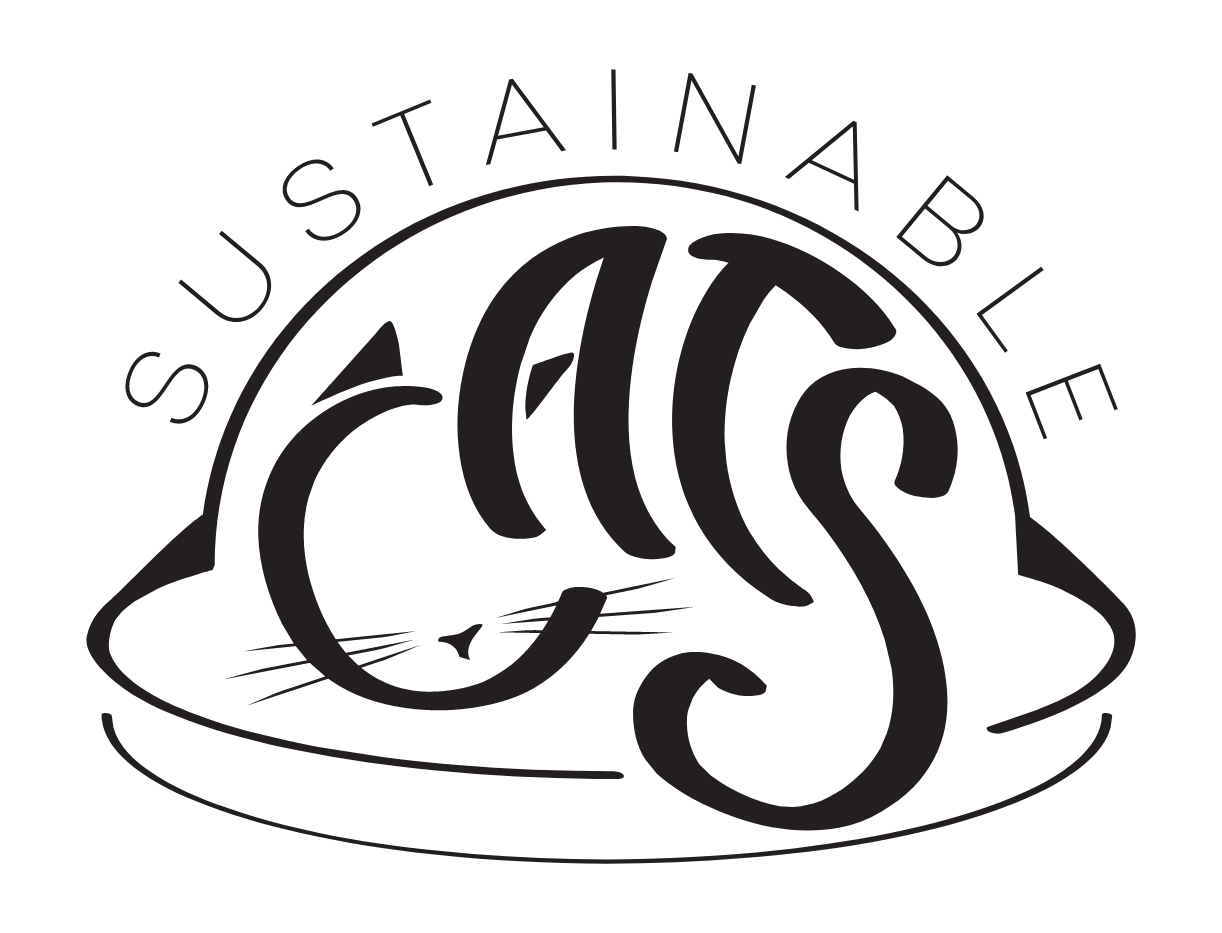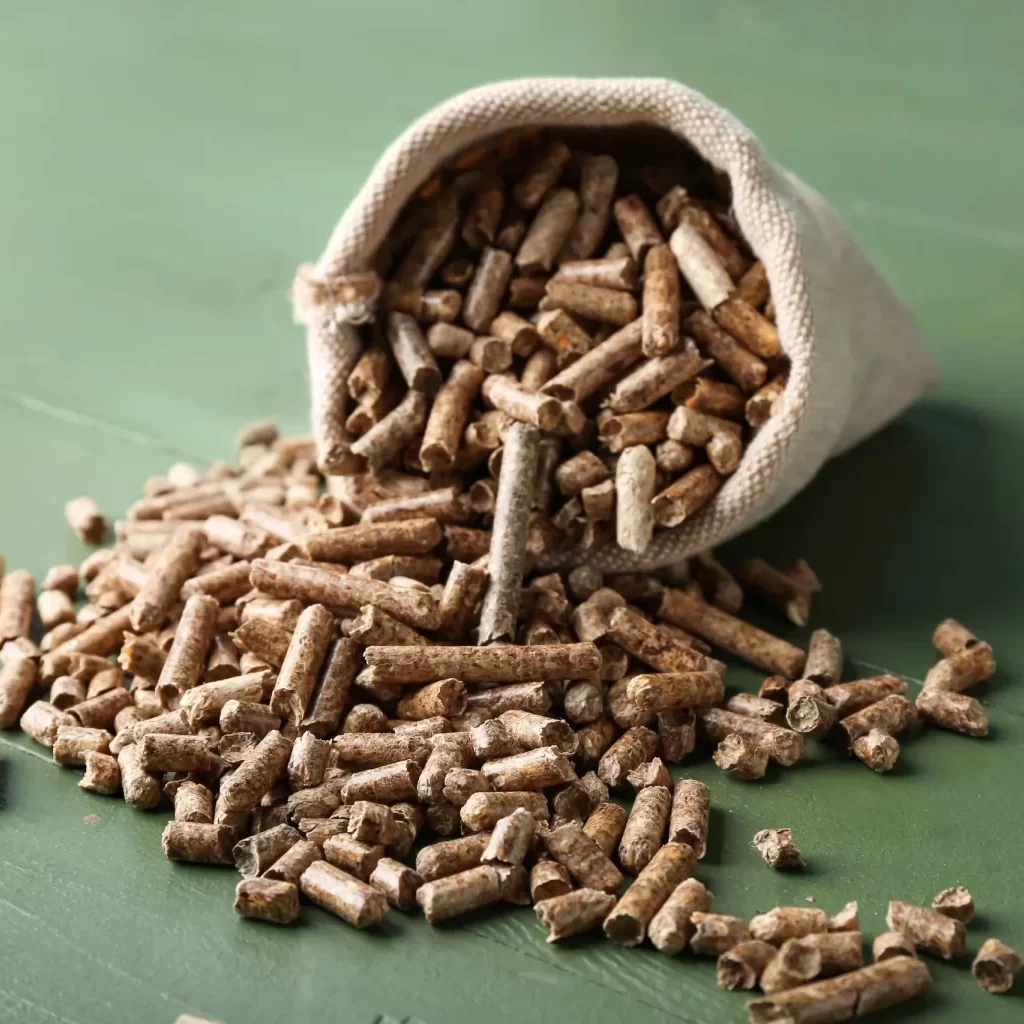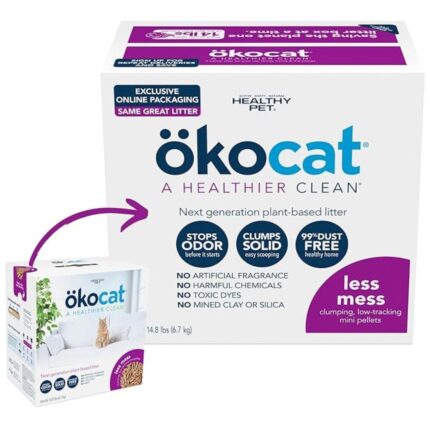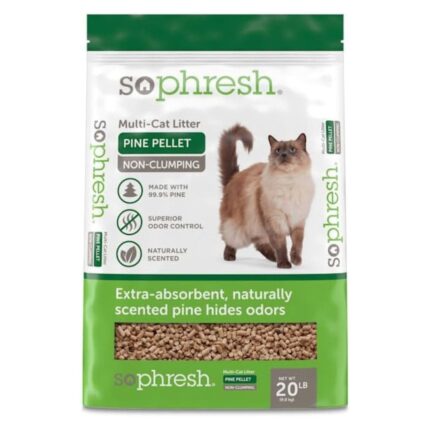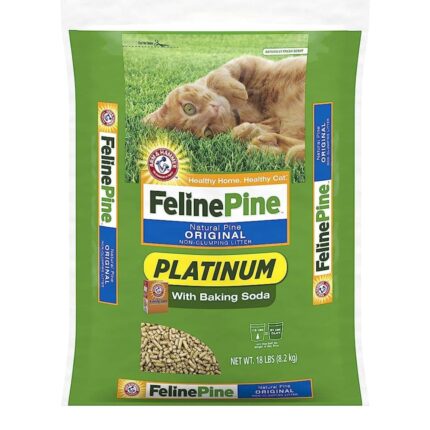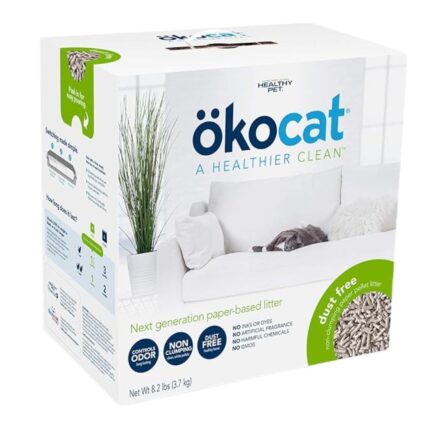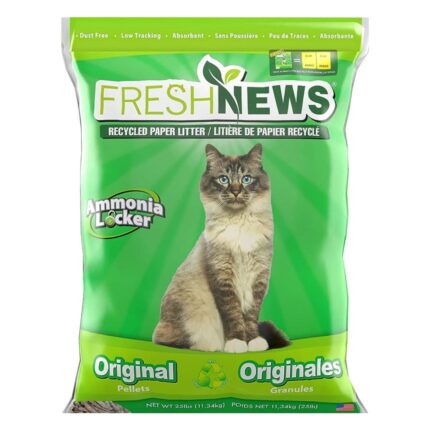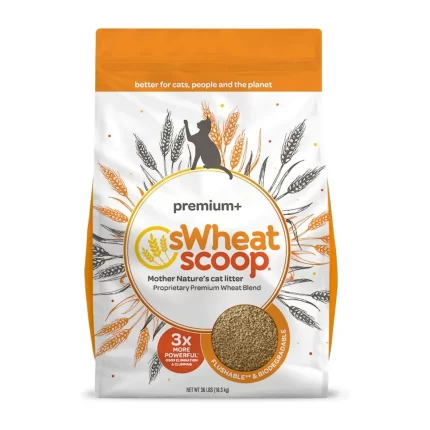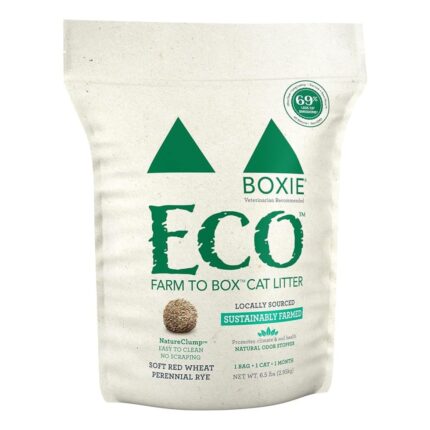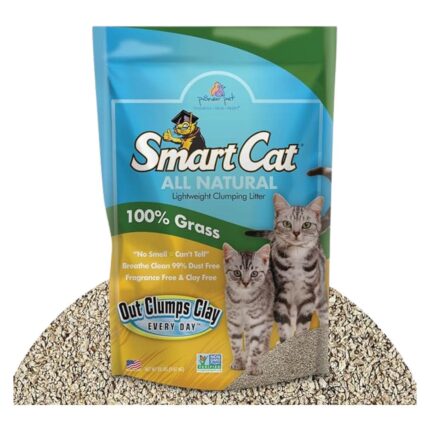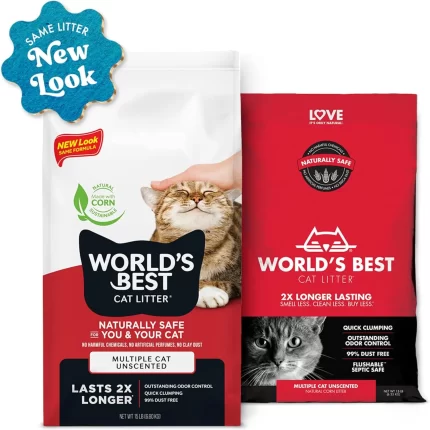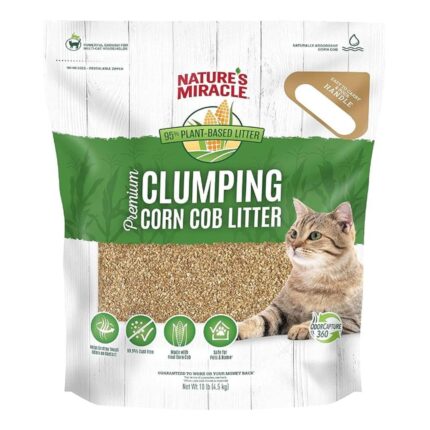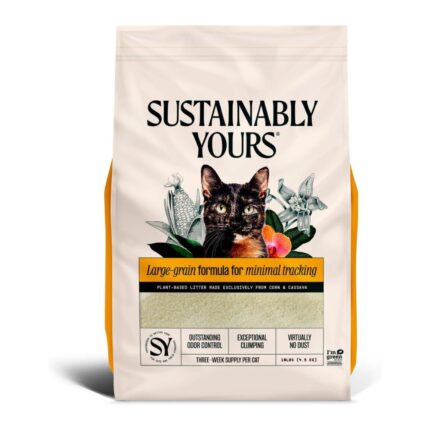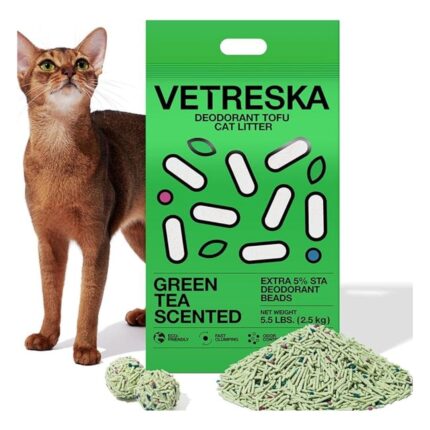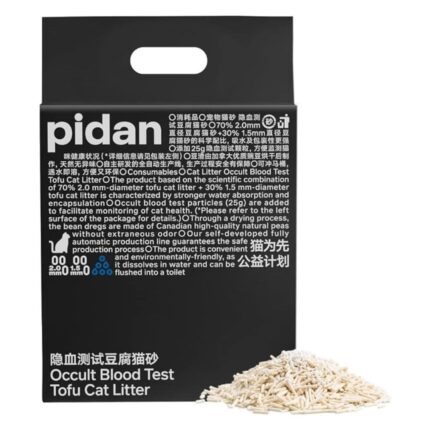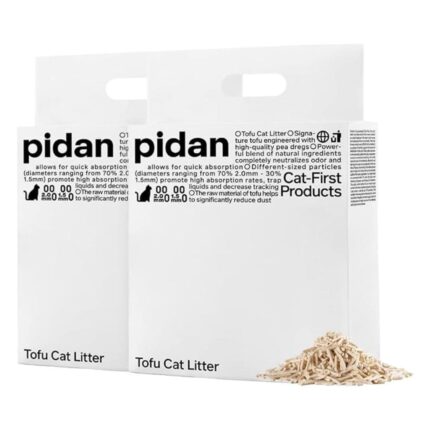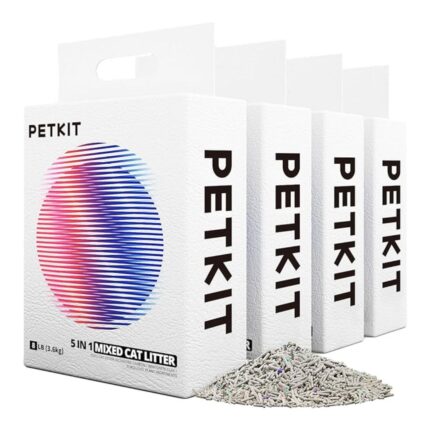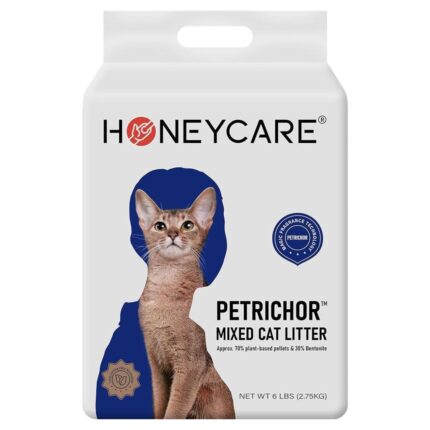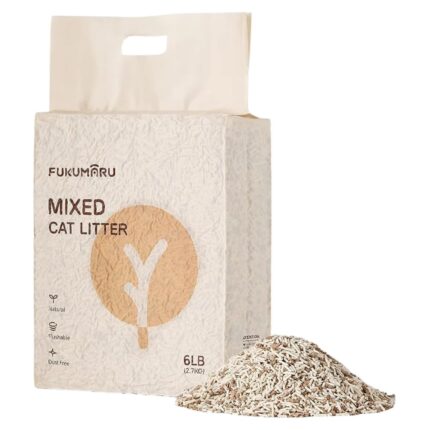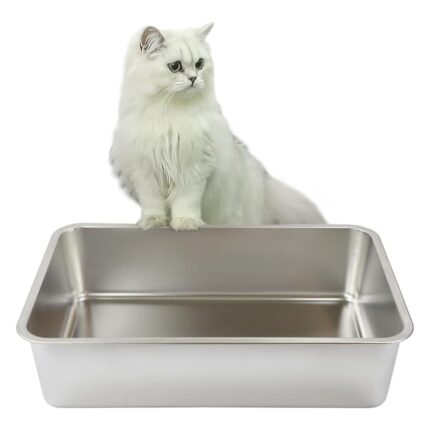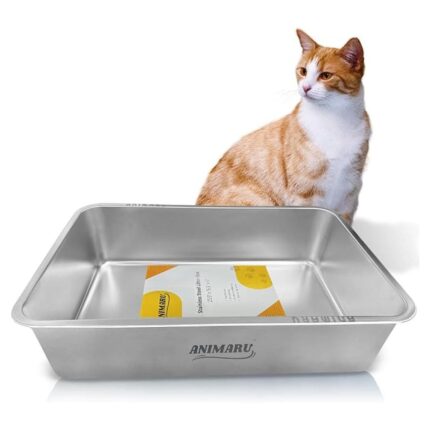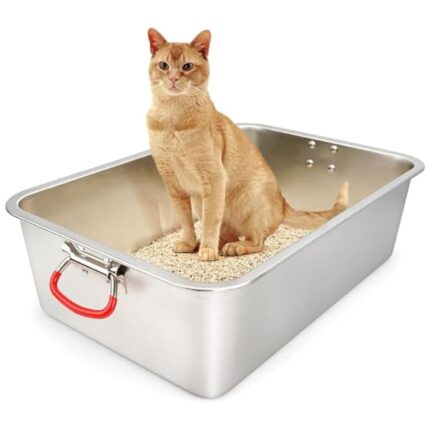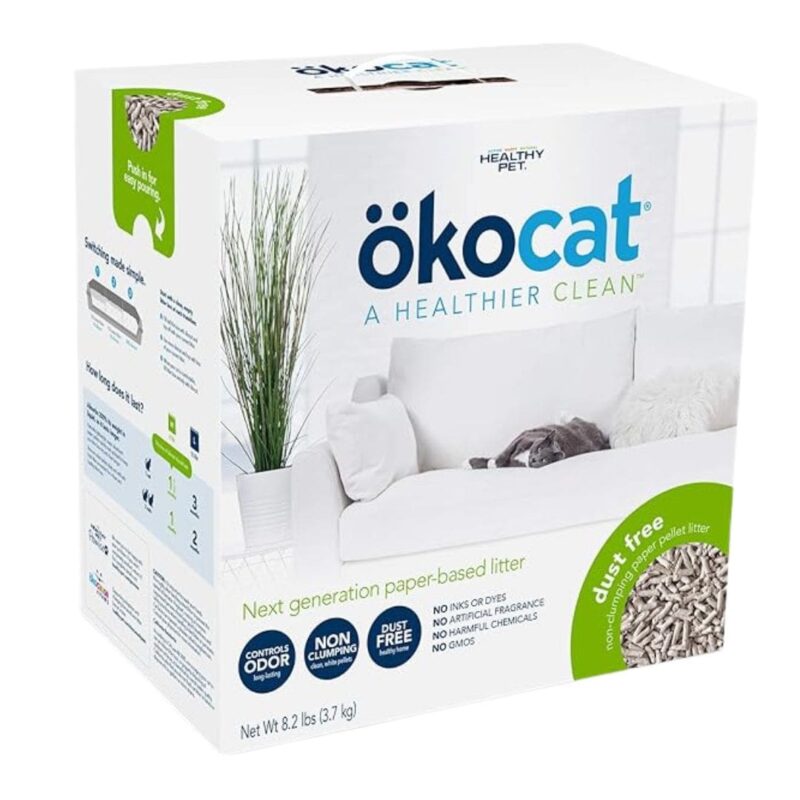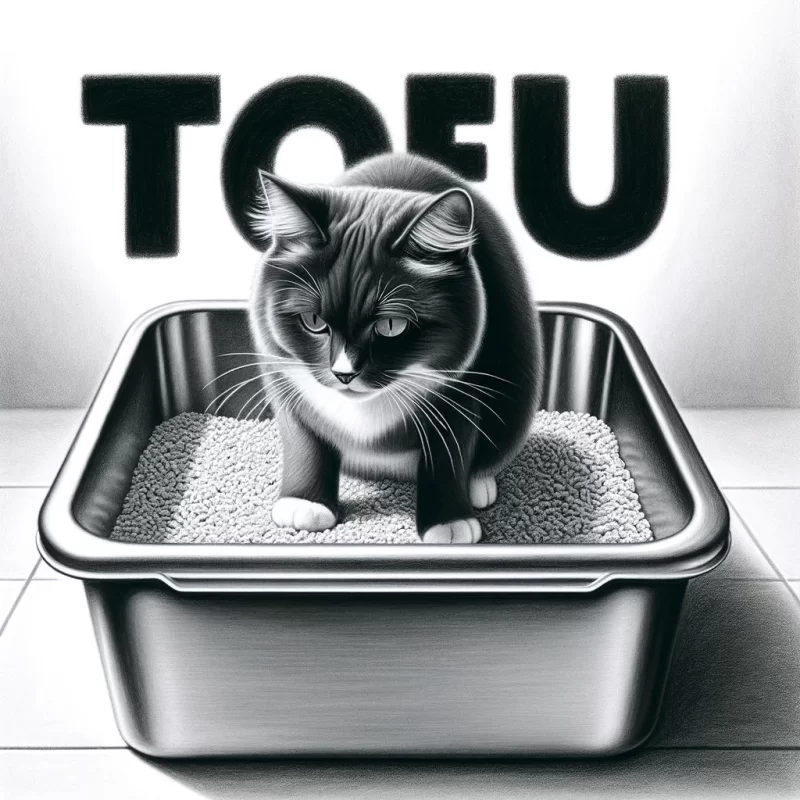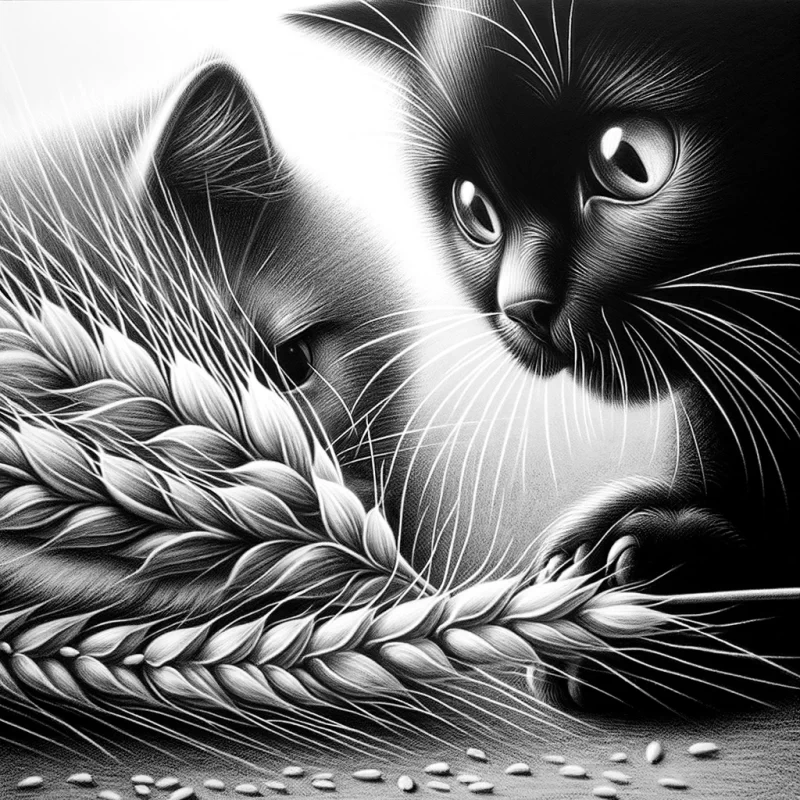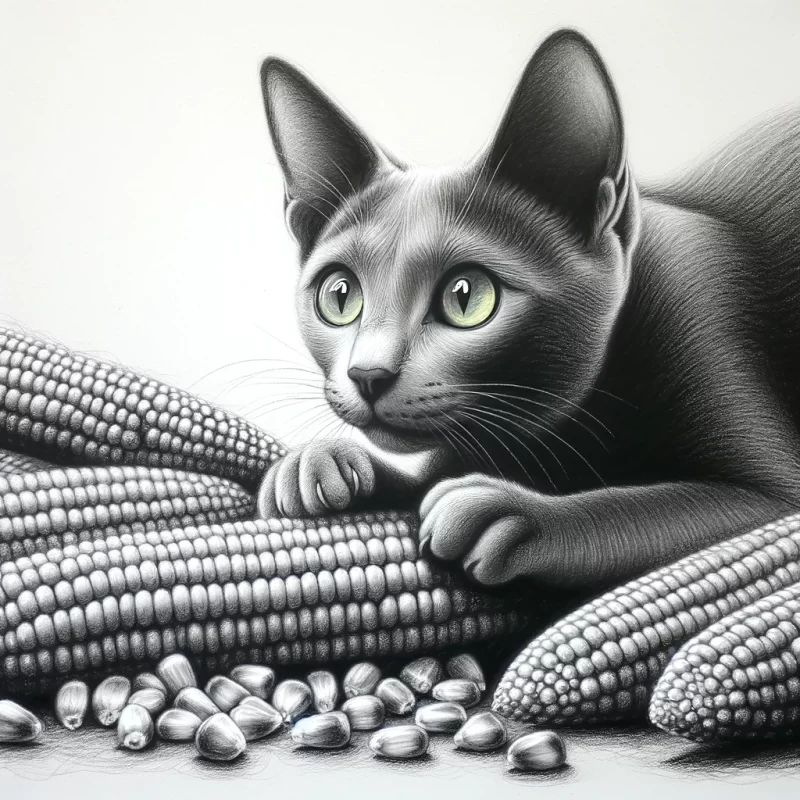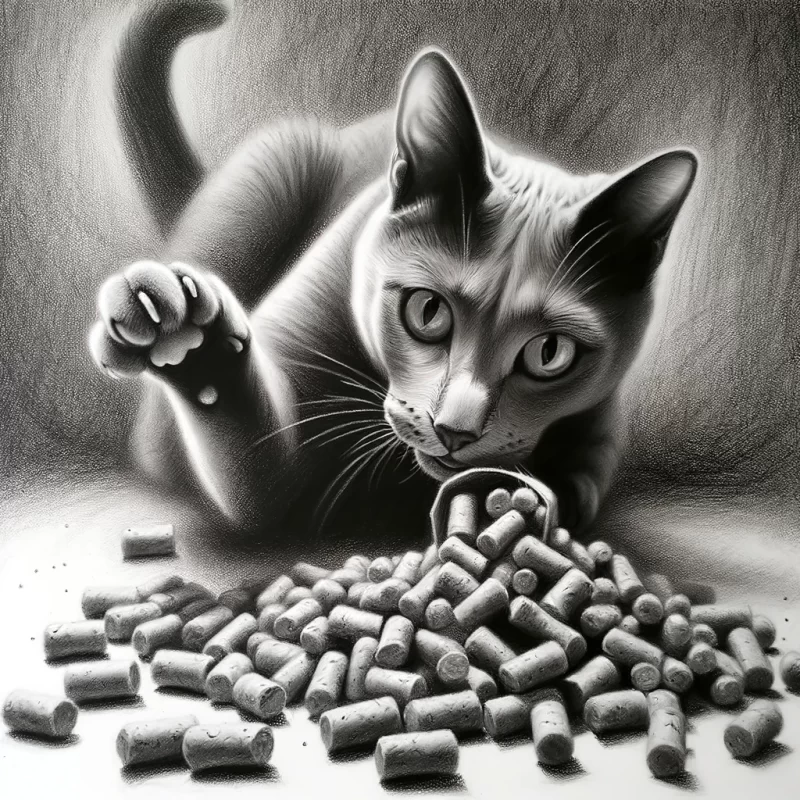Introduction:
Welcome to our comprehensive guide on cat litter pellets, a must-read for all cat owners looking to provide the best care for their feline companions.
This article explores the world of cat litter pellets, including their benefits, types, and how they can improve your cat’s litter box experience.
As a cat owner interested in cat care and sustainability, I am excited to share valuable insights on why cat litter pellets are a game-changer in pet care.
Cat litter pellets are not just your average litter; they are designed to offer superior odour control, minimal tracking, and easy maintenance, making them a popular choice among cat owners seeking convenience and cleanliness.
Whether you are a seasoned cat parent or a newbie in feline care, understanding the nuances of cat litter pellets can significantly enhance your cat’s living environment and overall experience as a pet owner.
Throughout this article, we will explore the various types of cat litter pellets available, provide expert tips on selecting the best option for your cat, highlight the environmental benefits of using these pellets, and offer practical advice on proper usage and maintenance.
Join us on this journey as we uncover the wonders of cat litter pellets and discover how they can elevate your cat’s litter box routine to a new level of comfort and sustainability.
Types of Cat Litter Pellets
Regarding cat litter pellets, many options are available to cater to different preferences and needs. Here, we will discuss the most popular types of cat litter pellets and their unique features, allowing you to decide when to select the perfect fit for your feline friend.
Wood-Based Cat Litter Pellets
Wood-based cat litter pellets are a favourite among eco-conscious cat owners due to their biodegradable and sustainable nature. Made from recycled wood or sawdust, these pellets offer excellent odour control and minimal dust, making them a clean and convenient choice.
Paper-Based Cat Litter Pellets
Paper-based cat litter pellets are another eco-friendly option, made from recycled paper products. These pellets are highly absorbent, lightweight, and safe for cats, making them an ideal choice for kittens and senior cats with mobility issues.
Grass-Based Cat Litter Pellets
Grass-based cat litter pellets are a relatively new addition to the market, offering a unique blend of sustainability and odour control. Made from natural grass fibres, these pellets are highly absorbent, biodegradable, and gentle on cats’ paws.
Corn-Based Cat Litter Pellets
Corn-based cat litter pellets are a popular alternative to traditional clay-based litters. These highly absorbent, biodegradable pellets are made from ground corn kernels and offer excellent odour control. However, they may not be the best option for cats with allergies or sensitivities to corn.
Tofu-Based Cat Litter Pellets
Tofu-based cat litter pellets offer a unique and innovative solution. Made from tofu by-products, these pellets are highly absorbent, biodegradable, and free from harmful chemicals, providing a safe and sustainable option for both cats and the environment.
Hybrid Cat Litter Pellets
Hybrid cat litter pellets combine the benefits of various materials, offering a versatile and high-performing solution. These pellets often feature a mix of wood, paper, or grass fibres and added odour-control agents or absorbents, providing the ultimate litter box experience for both cats and their owners.
Understanding the different types of cat litter pellets is crucial in selecting the best option for your cat. When deciding, consider factors such as odour control, clumping or non-clumping abilities, dust levels, eco-friendliness, and your cat’s needs. Choosing the suitable cat litter pellets ensures a cleaner, healthier, and more sustainable litter box experience for you and your feline companion.
How to Choose the Best Cat Litter Pellets
Selecting the ideal cat litter pellets for your feline companion involves considering various factors to ensure a harmonious and effective litter box experience. Here are expert tips to guide you in choosing the best cat litter pellets that align with your cat’s needs and sustainability preferences.
Consider Odor Control
Opt for cat litter pellets that excel in odour control to maintain a fresh and pleasant environment for you and your cat. Look for pellets with natural odour-absorbing properties or added fragrances designed to neutralise odours effectively.
Evaluate Absorbency
Prioritise cat litter pellets with high absorbency to minimise tracking and maintain cleanliness in the litter box. Absorbent pellets help to trap moisture and odours, ensuring a hygienic and comfortable space for your cat to use.
Assess Dust Levels
Choose cat litter pellets with minimal dust to promote respiratory health for you and your cat. Low-dust pellets reduce airborne particles, creating a cleaner and healthier environment while minimising potential respiratory irritants.
Eco-Friendliness
Opt for eco-friendly cat litter pellets, such as wood-based, paper-based, grass-based, corn-based, or tofu-based, to reduce your environmental impact. Sustainable pellets benefit the planet and provide your cat with a safe and natural litter solution.
Consider Your Cat’s Preferences
Consider your cat’s preferences and sensitivities when selecting cat litter pellets. Some cats may prefer a specific texture or scent, while others may have allergies that require a particular type of litter. Choose pellets that cater to your cat’s needs for a comfortable, stress-free litter box experience.
By carefully evaluating factors such as odour control, absorbency, dust levels, eco-friendliness, and your cat’s preferences, you can confidently choose the best cat litter pellets that promote a clean, healthy, and sustainable litter box environment for your feline companion.
Remember: choosing suitable cat litter pellets can enhance your cat’s well-being and overall satisfaction as a pet owner.
Benefits of Using Cat Litter Pellets
Cat litter pellets offer many benefits for cats and their owners, making them an increasingly popular choice in pet care. Let’s explore the advantages of cat litter pellets and why they can significantly improve your cat’s litter box experience.
Superior Odor Control
One of the primary benefits of cat litter pellets is their exceptional odour control capabilities. Many pellets are designed with natural odor-neutralizing agents, such as baking soda or activated charcoal, effectively eliminating unwanted smells and maintaining a fresh and pleasant environment.
Minimal Dust
Cat litter pellets are known for their low dust content, which reduces airborne particles and minimises respiratory irritants. This feature contributes to a cleaner and healthier living space for cats and their owners, particularly those with allergies or respiratory sensitivities.
High Absorbency
Cat litter pellets offer excellent absorbency, effectively trapping moisture and odours within the pellets. This feature reduces tracking and leakage, keeping the litter box clean and hygienic for a more enjoyable litter box experience.
Eco-Friendly and Sustainable
Many cat litter pellets, such as wood-based, paper-based, grass-based, corn-based, and tofu-based, are eco-friendly and biodegradable. These sustainable alternatives to traditional clay or silica-based litter reduce waste and promote environmental consciousness, aligning with the values of cat owners who prioritise sustainability.
Easy Maintenance
Cat litter pellets are generally low-maintenance, making them a convenient choice for busy cat owners. The pellets’ high absorbency and minimal dust content simplify cleaning routines, while their long-lasting nature reduces the frequency of litter changes.
Gentle on Paws
Cat litter pellets are typically gentle on cats’ paws, providing a comfortable and stress-free litter box experience. The larger pellet size also discourages cats from ingesting litter while grooming, promoting overall health and well-being.
By embracing the benefits of cat litter pellets, cat owners can create a cleaner, healthier, and more sustainable litter box environment for their feline companions. From superior odour control to eco-friendliness, cat litter pellets offer a versatile and high-performing solution that enhances the litter box experience for both cats and their owners.
Proper Usage and Maintenance of Cat Litter Pellets
Using and maintaining cat litter pellets properly is crucial for ensuring their effectiveness, longevity, and your cat’s overall health and well-being. Here are some informative tips for properly using and maintaining cat litter pellets:
Choosing the Right Litter Box
Select a litter box that is large enough for your cat to use and turn around comfortably. A litter box with high sides or a top-entry design can help contain litter pellets and prevent tracking. Opt for a stainless steel litter box for sustainability, easy cleaning, and maintenance.
Preparing the Litter Box
Before adding the cat litter pellets, clean the litter box thoroughly with warm water and mild, unscented soap. Avoid harsh chemicals or strong-scented cleaners, as they can deter your cat from using the litter box. Allow the box to dry completely before adding the pellets to prevent bacterial growth and odour buildup.
Initial Layer of Pellets
Add a layer of cat litter pellets to the litter box, ensuring an even distribution. The depth of the pellets should be about 2-3 inches, providing enough coverage for your cat to dig and bury their waste. This depth also allows for better absorption and odour control.
Regular Maintenance
Remove solid waste from the litter box daily to prevent odour buildup and maintain a clean litter box environment. Stir the pellets to distribute them evenly, allowing for better absorption and easier waste scooping. This regular maintenance also helps extend the life of the pellets and reduces the frequency of litter change.
Replacing the Pellets
Replace the cat litter pellets every two to three weeks or when they become saturated with urine and lose their effectiveness. Dispose of used pellets responsibly, such as composting or throwing them in the trash. When changing the litter, clean the litter box thoroughly before adding a fresh layer of pellets.
Transitioning Your Cat to Cat Litter Pellets
Gradually introduce your cat to the new litter by mixing small pellets with their current litter. Over several days, gradually increase the amount of pellets while decreasing the amount of the old litter. This slow transition helps your cat adjust to the new texture and scent of the pellets, reducing stress and anxiety.
Monitoring Your Cat’s Health
Monitor your cat’s health and behaviour while using cat litter pellets. If your cat experiences discomfort, such as difficulty urinating or defecating, or shows signs of allergies or skin irritation, consult a veterinarian to determine if the litter is the cause.
By following these informative tips for proper usage and maintenance, you can ensure that your cat’s litter box remains clean, odour-free, and comfortable while also maximising the benefits of using eco-friendly cat litter pellets.
Proper care and attention to your cat’s litter box need not only contribute to their health and well-being but also promote a more sustainable and environmentally friendly approach to pet care.
Environmental Impact of Cat Litter Pellets
Understanding the environmental impact of cat litter pellets is crucial for cat owners who prioritise sustainability and eco-friendliness. Here, we explore the ecological benefits of various cat litter pellets, supported by data and research, to provide a clearer picture of how these products contribute to a greener and more responsible approach to pet care.
Biodegradable and Sustainable Materials
Many cat litter pellets, including wood-based, paper-based, grass-based, corn-based, and tofu-based, are biodegradable and sustainable. These eco-friendly alternatives reduce waste and promote environmental consciousness, aligning with the values of cat owners who prioritise sustainability.
According to a study by the Environmental Protection Agency (EPA), biodegradable materials can decompose naturally within six months, significantly reducing waste and landfill impact compared to traditional clay-based litter.
Reduced Carbon Footprint
Compared to traditional clay-based litter, cat litter pellets often have a lower carbon footprint due to their lighter weight and reduced transportation emissions. This feature contributes to a greener and more responsible approach to pet care, reducing the environmental impact of cat ownership.
Research by the University of California, Berkeley, found that switching from clay-based litters to plant-based cat litter pellets can reduce carbon emissions by up to 60%, highlighting the significant environmental benefits of using eco-friendly cat litter alternatives.
Recycling and Upcycling
Some cat litter pellets are crafted from recycled or upcycled materials, such as reclaimed wood, paper, or tofu by-products. These innovative solutions reduce waste and promote a circular economy, where resources are reused and repurposed to minimise environmental impact.
A study by the Environmental Research & Education Foundation (EREF) revealed that recycling one ton of paper can save 17 trees, 7,000 gallons of water, and three cubic yards of landfill space, demonstrating the positive environmental impact of using recycled materials in cat litter pellets.
Energy Efficiency
Manufacturing cat litter pellets often requires less energy than traditional clay-based litter, contributing to a more energy-efficient and eco-friendly production process. This energy efficiency reduces the environmental impact of cat litter production, aligning with the values of cat owners who prioritise sustainability.
According to a report by the National Renewable Energy Laboratory (NREL), manufacturing plant-based cat litter pellets consumes 65% less energy than producing clay-based litter, highlighting the significant energy savings associated with eco-friendly cat litter alternatives.
Composting and Waste Management
Many cat litter pellets, particularly those made from biodegradable materials, can be composted or disposed of responsibly. This feature promotes responsible waste management and reduces the environmental impact of cat litter disposal, contributing to a greener and more sustainable approach to pet care.
Research by the U.S. Composting Council indicates that composting organic waste, such as cat litter pellets made from plant-based materials, can reduce greenhouse gas emissions by up to 70% compared to traditional waste disposal methods, emphasising the environmental benefits of responsible cat litter disposal.
Understanding the environmental impact of cat litter pellets, supported by data and research, allows cat owners to make informed decisions about their products and contribute to a more responsible and eco-friendly approach to pet care. From biodegradable materials to energy efficiency, cat litter pellets offer a range of environmental benefits that align with the values of cat owners who prioritise sustainability and environmental consciousness.
Conclusion: The Future of Cat Litter Pellets
In conclusion, cat litter pellets offer a sustainable and eco-friendly solution for cat owners seeking a clean, odour-free, and environmentally conscious litter box experience for their feline companions.
From biodegradable materials to reduced carbon footprints, these pellets present a range of benefits that align with the values of sustainability and responsible pet care.
By understanding the environmental impact of cat litter pellets and choosing eco-friendly options, cat owners can contribute to a greener future while ensuring the well-being of their beloved cats.
Join the movement towards sustainable pet care by switching to eco-friendly cat litter pellets today. Please share your experiences with using cat litter pellets and their positive impact on your cat’s litter box routine.
Please explore our website for tips on sustainable pet care practices and eco-friendly pet products. We can create a cleaner, healthier, and more sustainable environment for our furry friends and future generations.
Make a conscious choice for your cat and the planet – choose eco-friendly cat litter pellets.
Top FAQs for Cat Litter Pellets:
1. What are the benefits of using cat litter pellets?
Cat litter pellets have become popular among cat owners due to their numerous benefits. Firstly, they are highly effective in controlling unpleasant odours, keeping your cat’s litter box fresh and clean for longer. This is particularly important if you have multiple cats or a small living space.
Another advantage of cat litter pellets is that they have low tracking, meaning they are less likely to stick to your cat’s paws and spread throughout your home. This can save you time and effort in cleaning up after your cat.
Moreover, cat litter pellets are lightweight, making them easy to handle and dispose of. They also have biodegradable properties, meaning they can be safely disposed of after use without harming the environment.
Additionally, cat litter pellets are made from sustainable materials, such as recycled wood, paper, or grass, making them an eco-friendly option for cat owners who are conscious of their environmental impact.
In summary, the benefits of using cat litter pellets include effective odour control, low tracking, lightweight, biodegradable, and eco-friendly properties. By choosing cat litter pellets, you can provide a comfortable and hygienic environment for your feline friend while also doing your part for the environment.
2. How do cat litter pellets compare to traditional clay litter?
Cat litter pellets are a great alternative to traditional clay litter. They are usually made from recycled paper, wood, or plant fibres, making them more eco-friendly. Moreover, they are much lighter than clay litter, making them easier to handle and dispose of.
Regarding performance, cat litter pellets are known for their superior odour control. They are designed to absorb moisture and trap odours, keeping your home fresh and clean. Additionally, they are less likely to be tracked around the house, which means less mess and hassle for cat owners.
Cat litter pellets may require a bit of a transition period for your cat to get used to them. However, many cat owners find them a more convenient and cost-effective option once they do.
3. Are cat litter pellets safe for my cat?
Cat litter pellets are a popular choice for pet owners due to their convenience and safety for cats. These pellets are made from non-toxic materials, such as wood, paper, wheat, corn or tofu, and are designed to be gentle on your cat’s paws. However, it’s essential to remember that some cats may be sensitive to certain types of litter, so monitoring your cat’s behaviour and ensuring they are comfortable using it is crucial.
When choosing cat litter pellets, it’s essential to read the label and ensure they are safe for your cat. Some litter pellets may contain allergens that could harm your cat’s health (some cats may have wheat allergies). If you have a kitten, choose a softer litter to avoid discomfort or injury to their delicate paws.
Overall, cat litter pellets are generally safe for cats, but you must be aware of any potential sensitivities or issues your cat may have. You can ensure their health and happiness by keeping your cat’s litter box clean and providing a comfortable and safe environment.
4. How often should I change the cat litter pellets?
Regarding cat litter pellets, it’s essential to maintain a clean and hygienic environment for your furry friend.
The frequency of changing the litter pellets will depend on factors such as the number of cats you have and the size of the litter box.
As a general rule of thumb, changing the pellets every two to three weeks or when they become saturated with urine and lose their effectiveness is recommended.
However, if you have more than one cat, you may need to change the pellets more frequently to ensure the litter box remains clean and odour-free. It’s also mandatory to scoop out any solid waste daily to maintain a fresh and clean litter box.
By following these simple guidelines, you can help ensure that your cat stays healthy and happy while also keeping your home smelling fresh and clean.
5. Can cat litter pellets be flushed down the toilet?
While some cat litter pellets, such as those made from tofu or certain types of wood, may be marketed as flushable, it’s important to note that flushing them down the toilet can pose serious environmental hazards.
Flushing cat litter can introduce harmful bacteria and parasites into the water supply, which can be dangerous to marine life and humans.
Therefore, it is generally recommended that cat litter pellets should not be flushed down the toilet.
Always check the product label for disposal instructions and local regulations to ensure you properly dispose of cat litter pellets in an environmentally friendly way.
AFFILIATE LINK ETHICS POLICY
Most of the products mentioned here contain affiliate links, meaning that if you go on and purchase after clicking, part of your purchase supports this project at no extra cost to you.
1. As cat owners, we will never promote anything we wouldn’t purchase ourselves.
2. We will only promote products and services with at least one notable sustainable feature: natural materials, responsible sourcing, responsible manufacturing, recyclable packaging, etc.
3. If you make a purchase through any of our affiliate links, thank you for supporting our work!
